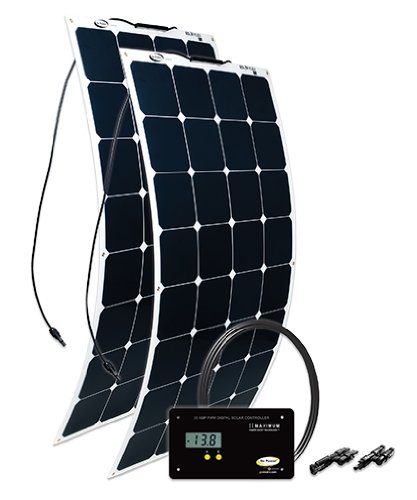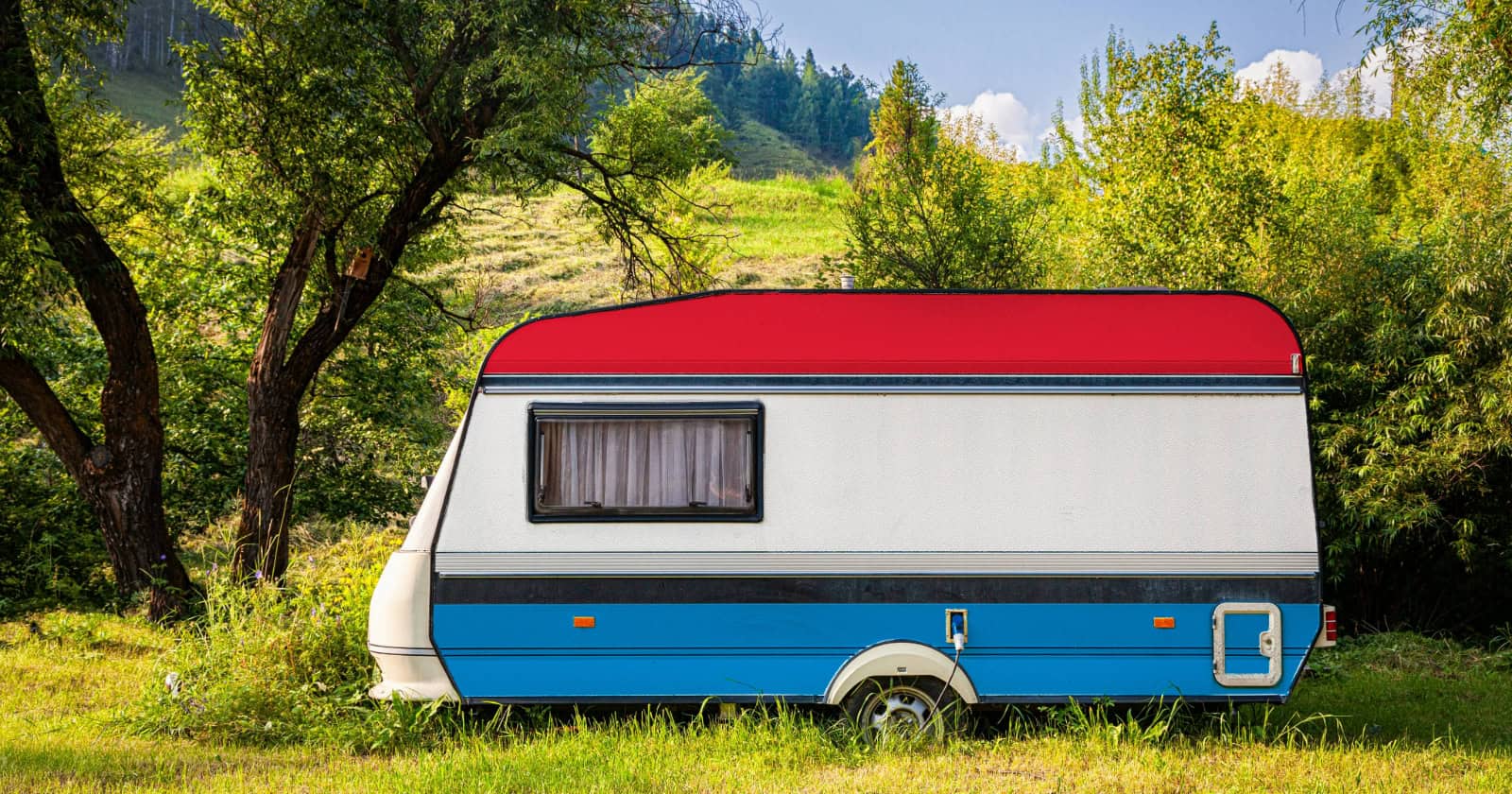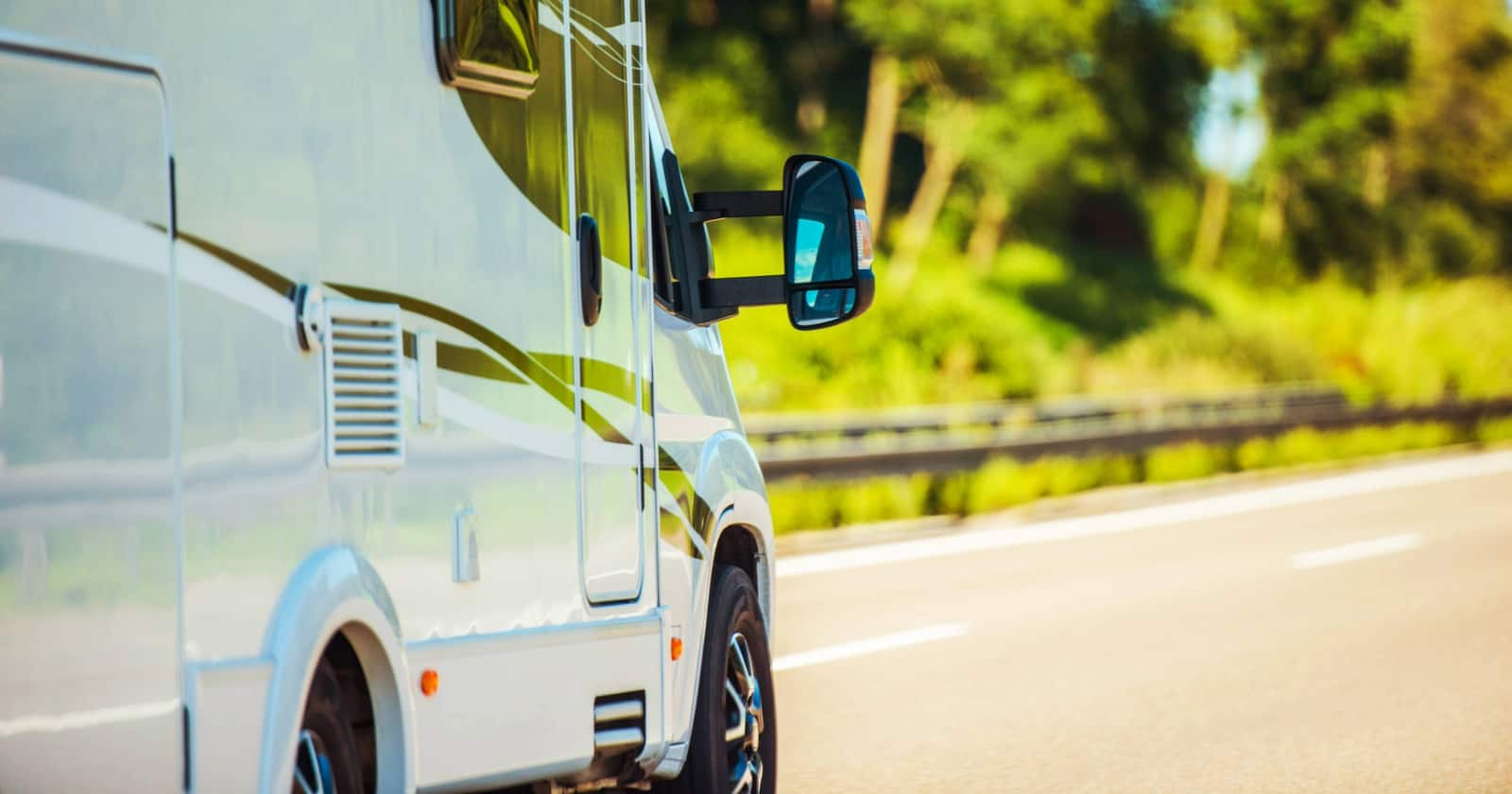Typical Solar Power System Components
Below is a run down of the basic components of an RV solar power system.
Solar Panel Basics
You may have heard that there are three types of solar panels, categorized by how each individual cell on the solar panel is constructed.
The three types are:
- monocrystalline – each cell is a thin wafer of a pure silicon crystal
- polycrystalline – each cell is made of silicon that’s melted and then poured into a mold
- amorphous – each cell is made of a thin layer of silicon attached to a backing material (think of a sticker on it’s backing)
Most of the trickle chargers we talked about earlier are made of amorphous cells. Amorphous cells are the cheapest of the three types, and are better at collecting power from the sun on cloudy days. But they’re not as efficient at collecting energy as the mono and poly cells.
Most solar panels made for powering and charging – as opposed to trickle charging (maintaining charge) – are made of either mono or poly cells.
The 320 watt Go Power! kit above, for example, is made of monocrystalline cells.
Flexible or Rigid?
While the actual solar panel cells are monocrystalline, polycrystalline or amorphous, the entire panel can be either rigid or flexible.
The mono and poly cells are usually part of rigid frames, while the less efficient amorphous cells can be molded into flexible panels that can bend up to about 30 degrees.
Recently though, Go Power! has introduced a new flexible panel with mono cells, called the Solar Flex.
Another manufacturer, Renogy, also has their own flexible mono cell panel on the market.
These flexible mono panels are a bit more expensive than their rigid counterparts, however.

Solar Charge Controller Basics
The charge controller, sometimes called a charge regulator, is the command center for your RV solar system.
It regulates the power (both current and voltage) coming from the solar panels to prevent your batteries from becoming overcharged. The solar powered trickle chargers we talked about earlier generally don’t come (or need) a charge controller.
And interesting fact about solar panels is that while they’re usually rated at 12 V, they often put out about 16-20 V.
You might wonder why the panels put out more voltage than the batteries they’re charging are rated for.
The answer is that if the panels were designed to only output 12 V, they wouldn’t produce nearly enough power during less than perfect conditions and full sun. So the engineers design the panels to output more voltage than rated during optimal conditions, so that when the clouds come in or the panel heats up (solar panels work better when they’re cool) you’ll still be able to get 12 V out of them.
Solar charge controllers can read and adjust battery voltage, optimize power flow, figure solar panel production, and keep the RV solar system running efficiently and your batteries from overcharging.
What Is Maximum Power Point Tracking?
Maximum power point tracking (MPPT) has improved the way charge controllers interact with the different RV solar components.
An MPPT controller is an electronic DC to DC converter that converts the higher DC output from the solar panels to a lower DC voltage needed to charge your RV’s batteries.
If you use a regular charge controller, you’ll lose a lot of power if there is a poor match between the output on the solar panel and the current charge on your battery.
The MPPT charge controller on the other hand, will constantly compare the output on the panel with the battery charge state, optimizing the voltage to get the most amps into the battery. You can read more about MPPT charge controllers here.
You should consider an MPPT charge controller if you’re serious about building a quality RV solar setup.
Digital Monitoring Unit
Who doesn’t like to know what’s going on?
The ability to monitor your RV solar system varies widely with the quality and cost of the setup. Some systems use indicator lights, others simply list the voltage.
By using a digital monitoring unit, such as the Xantrex CM/R-50, you’ll be able to read the volts, amps, and cumulative amp hours of your solar array.
Solar Wiring
Wiring is the backbone of your RV solar system. Just don’t get tricked though, as there’s no special wire made exclusively for solar panels.
Read this informative guide to learn what type of wiring to use with your solar power setup.
Mounting Hardware
It goes without saying that mounting your RV solar panels should be done with the highest quality hardware so that they are absolutely secure.
You can mount your panels either flat or on some tilt brackets.
Some RVers believe that tilt brackets can be troublesome. If you mount your panels permanently, be sure to consider the loss of efficiency if the panels don’t face directly toward the sun.
Conclusion
This RV solar guide is meant for the solar power beginner. While we’ve introduced the basic components and talked a little about how they work with each other, you’ll want to do more research before you make your final purchase decision.
If you want to continue your research we encourage you to visit the links below to learn more.
- Trailer Life – RV Solar Power
- LiveWorkDream -RV Solar Power Expectations and Considerations
- GoneWithTheWynns.com – What Can Solar Power Do For an RV?
- MarxRV.com – The 12 volt Side of Life
- MacSlab.com – Optimum Tilt of Solar Panels
- Good Sam Club – Do-It-Yourself RV Solar: What you need to know.
- JackDanMayer.com – RV Electrical and Solar
- Northern Arizona Wind and Sun – Solar Power Equipment Dealer
Where to find RV solar panels, controllers, parts and accessories:
- Campingworld.com RV Solar Equipment and Installation
- Amazon.com RV Solar Parts and Accessories for Self Install
- RVsolarelectric.com RV Solar Electric
- Amsolar.com AM Solar is popular among RVers
- WholesaleSolar.com Wholesale Solar




I don’t see a answer for your post Brain, would like to know what you found out please, thank you
OH, and don’t forget start-up current on the compresser is several times running current. The Yetis are rated at 1500W peak.
You might get an hour or two of air conditioning from the Yeti 1250. I have a Goal Zero Yeti 150 that will run a C-PAP for (almost) an hour. Maybe longer if I slept during daylight hours. 😉
I have a 2015 40′ Forrest River Villa park home model. All the lights are 12 v, and the water pump. Being a park home model it has a home type frig, microwave, the propane furnace, But I would guess a 110v blower. I want a system that if the grid goes down for an extended time I can power about 90% of most of my appliances being conservative with use. The hot water is propane, but has an electrical element also. I who knows next to nothing about a proper system to match up with the RV’s electrical system. How many batteries will I need in my bank. Since the RV has inverter and converter, is a charging controller the only of hardware I will need? Also how many sq. ft. of panels will I need. Only get good direct sunlight from noon on, so in the winter I loose several hours of sun. So would I need a couple more panels that I can engage for the seasonal change. I am sorry about being lengthy, I don’t want some fly by night selling me junk. I am on a pension so I need to by a system to start, and that can be expanded over time.
Yeah, kind of like the model airplane hobby or these new drones, you could make them yourself with a la carte parts, or just buy the $150 drone from Amazon (even if you don’t know what you’re doing!)
LOL Brian, yeah that statement didn’t make sense, we’ve got it fixed, thanks for the catch. Sounds good with the 85W panel, look forward to hearing the results of your testing.
I think in large part is’t due to just what you are getting with your panel. Being an EE, I am comfortable buying raw panels, separate controllers and doing all the wiring and figuring stuff out myself. Other folks aren’t as comfortable working with electricity and would make better use of the complete kits that are just plug & chug. Those kits are going to cost more $$ per watt because someone has done the engineering work already.
For some of us twisted folk, that kind of stuff is actually fun.
In the section “How Much Solar Power Do You Need For Your RV?” you talk about a panel that can deliver 10A as being about a 100W panel. Fair enough. Then you say “If you go higher, like with this 15 watt solar charging kit, . . .”
Is this a result of too much common core math? When is a 15W system (and that’s what the link shows) bigger than the 100W panel you were talking about? Oh and that 15W system? at $120 it’s kind of over priced
For the record, I have an 85W panel I am planning to use with my hybrid camper. For boondocking, using some interior lights, maybe a stereo some days and the water pump, it will do. I’ll have to report back and let you know how it goes . . .
Thanks for your comment PH. Sounds like you will have a serious off-grid bus when you’re through!
Converting a MCI 9 bus and will have multiple power sources. Propane powered generator, solar system and a wind generator in the future. Start with a solar system that you can add to as time and $ allow and have back up.
Why is there such a large discrepancy in solar Panay prices is there a difference or is this just a supply and demand
I am new at solar and camping. Can I hook up the batterie to solar panel and at the same time use this charging batterie?
Hi Michelle,
That sounds like an interesting idea. We’ll look into it further for you. Thanks for your comments and ideas.
Has anyone tried attaching a wind generator (ex. marine grade) to your trailer?
Over the winter we are going to remodel our 1988 Road Runner fifth wheel in which we mainly use for 2-3 days at a time at drag races and no hookups. We are installing solars on both it and our enclosed trailer we haul our dragster. I was wondering if anyone has tried the wind turbines to supplement power? We build solar/wind units for use in remote location in the oilfields and the combo works great, but since we are new to working and traveling in travel trailers, not sure how practical it would be.
Thanks for your help.
I want to put as high of capacity solar in roof of a step van as I can fit, I can fit 4 250 watt panels with some left over room . what is the best way to get max power. I was thinking of higher voltage panels then charge controller to charge 12v battery bank, will have 4 deep cycle batteries maybe more, and 3000 watt inverter to run freezer equipment. what are your thought on 24v , 48v , panels how many amps can they produce? you can call me at (702) 354-8487 Harrel.
I have a 100 watt solar system on my trailer utilizing two AGM 6 volt batteries. These batteries require a low charge rate. When towing, am I charging at too high a rate from the trucks alternator?
Battery University says:
AGM batteries are sensitive to overcharging. The float charge should be reduced to between 2.25 and 2.30V/cell (summer temperatures may require lower voltages). Automotive charging systems often have a fixed float voltage setting of 14.40V (2.40V/cell). To a sealed unit, this could spell trouble by exposing the battery to undue overcharge on a long drive.
I’m considering not charging while towing. The solar panels will suffice. If I drain them too low and require immediate assistance, I’ll use shore power or generator through my portable battery charger that is adjustable. On shore power, I’ll just set it on trickle.
THOUGHTS?
Thanks Timothy! We really appreciate you saying so. Come back and visit anytime!
INFO WAS GREAT
That is one way to announce a typo, thanks!
“Place the panel in the sun and viola! ” Is that like violin?
Yep, the Yeti! While searching for a small, quiet inverter generator this week, I stumbled across it. Of course, would need two for a 13,500 BTU AC on the RV to run, and that’s a bit pricey…
No! But now after a google search I have. Is this the one your talking about?
Thanks for the great overview! Have you seen the solar-powered generator that Lowe’s sells?